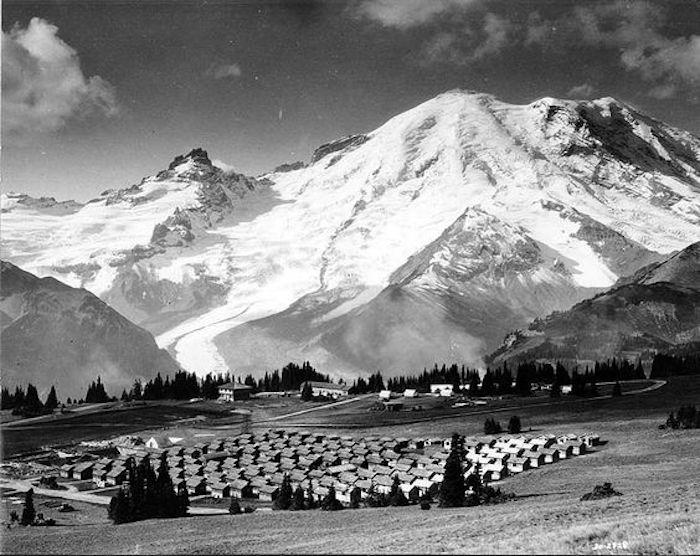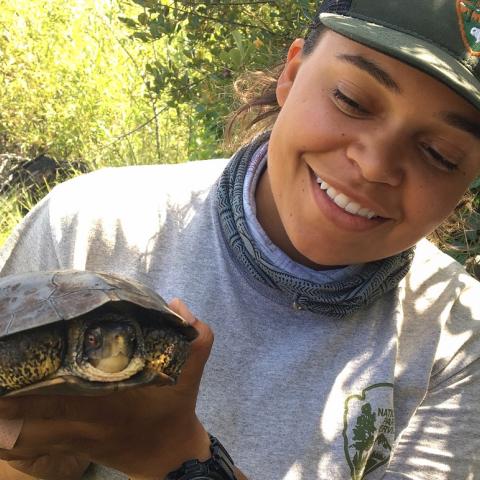
Tell Yellowstone officials not to build this parking lot near the Fairy Falls Trailhead/NPS graphic
Yosemite Valley is so crowded, why not build a temporary gravel lot in Cook's Meadow that could handle 75 vehicles?
Parking at the Logan Pass Visitor Center in Glacier National Park in August is near-impossible if you don't show up shortly after sunrise, so why not expand the lot with an acre of gravel in the meadow? And, surely, there must be a half-acre of ground near the summit of Cadillac Mountain at Acadia National Park where tour buses could idle while visitors take in the view of Frenchman Bay and sip some lemonade.
And if all those temporary solutions gain headway, why not make them permanent by paving over the gravel?
Of course, all those suggestions are ridiculous and wouldn't gain traction, let alone be vetted before the public. So why are Yellowstone National Park officials thinking of building a three-quarters-of-an-acre gravel lot near the Fairy Falls Trailhead that, while temporary at first bad thought, could turn into a permanent asphalt lot?
Although the trail leads to Fairy Falls and Imperial Geyser, another major draw is a hill along the route that offers a bird’s-eye view of the nearby Grand Prismatic Spring in Midway Geyser Basin. Social media and guidebooks started driving so many people to this location that Yellowstone crews are constructing an official trail and overlook to replace the many existing social trails on the hill. A formal trail to a spectacular view of the largest hot spring in the United States? It doesn’t take much imagination to see how the proposed temporary lot could become so popular that the park would be urged to lay down some asphalt.
Too many cars, trucks, and buses in Yellowstone? Surely there has to be a better solution than stripping two inches of topsoil and cutting down five lodgepole piness from a small slice of Yellowstone to create additional parking in a park that is struggling with record visitation. If this is the response to the nearly 4.3 million visitors who explored Yellowstone in 2016, what will the solution be when that tally bumps up to 4.5 million, or 4.75 million, or 5 million?
Yes, it can be frustrating to find a parking space at the often-busy Midway Geyser Basin. Of course, if drivers get fed up waiting for an opening, they could decide to turn the new temporary lot into a de facto “overflow” lot and walk about a mile back along the Grand Loop Road to the Midway boardwalk, negating any safety gains. And what happens when that parking lot is consistently full? Build another?
Yellowstone officials, in trying to justify this lot, note that once upon a time the ground had been disturbed by a freight road. Well, once upon a time a sprawling campground along with 215 cabins was located on the flanks of Sunrise in Mount Rainier National Park. Though those cabins were removed in the 1930s and 1940s, should the Park Service justify rebuilding a cabin city there on the grounds that other park campgrounds are insufficient to handle demand and, by the way, this area had previously been disturbed?
"It's critical that we don't get caught in a cycle of simply creating new parking lots or expanding infrastructure in a one-off manner. This approach could negatively impact the very natural resources visitors flock to Yellowstone to view," Stephanie Adams, the Yellowstone Program manager for the National Parks Conservation Association, told the Traveler. "NPCA will be submitting comments on the parking lot project encouraging the Park Service to hit the brakes on the parking lot and complete a long-term infrastructure and visitation plan for Yellowstone over the next year."
We couldn't agree more.
Unfortunately, growing visitation to the National Park System's crown jewels is a given. The Park Service should not bow down to that visitation and see how many more folks its can squeeze into the parks by building more parking lots, more lodges, and more front-country campgrounds. Rather, as unfortunate as it also may be, the agency should move to set carrying capacities for the parks, and enforce existing parking regulations, to ensure these landscapes are not further eroded away by visitors and their rigs.
The comment period on this proposed gravel lot in Yellowstone runs through the end of March. Comment now.

Should Mount Rainier National Park rebuild this cabin city because of demand and the fact that there used to be one here at Sunrise?




 Support Essential Coverage of Essential Places
Support Essential Coverage of Essential Places







Comments
I don't see how a mandatory mass-transit system could work in Yellowstone. Would it include lodging guests, RV & car campers, stock users, backpackers, bicyclists, canoeists, or visitors who had planned to transit the park from one side to another as part of a larger itinerary? If not, then you have a built-in double-standard favoring some visitors over others. If no private vehicles were allowed in the core of the park, then many parking lots far larger than 75 spaces would need to be built somewhere, not to mention bus barns and maintenance shops.
IMO, entry quotas are the only realistic way to limit long-term damage to some parks.
They should TOTALLY build that lot. It hurts conservation efforts to restrict people from enjoying our national parks. Getting people in, many of whom have never encountered this type of wilderness, excites them and creates a populace more inclined to preserve our land. Cutting down a handful of trees to accomodate this is more than fair. Over 80 million trees burned in the Yellowstone fire of 1988, which the National Park Service argues was good for the parks biodiversity.
Expanding people's access to the parks, in a responsible way, is the key to their protection. Restricting access leads to higher fees and fewer visitors. Visiting national parks should not be an elite activity, it should be an American right of passage!